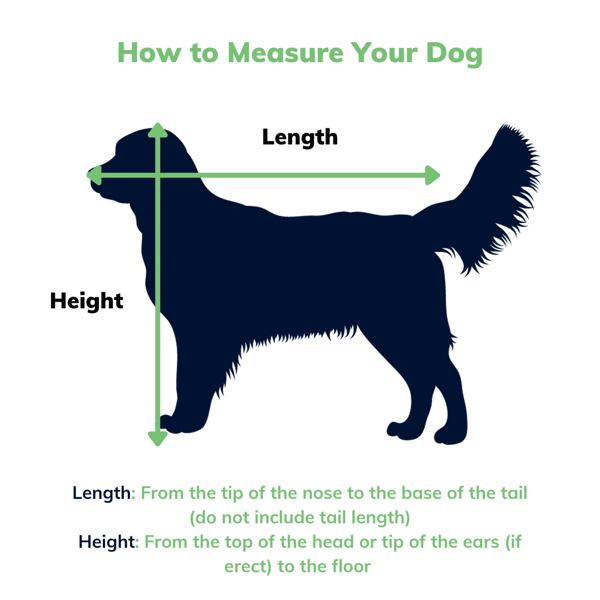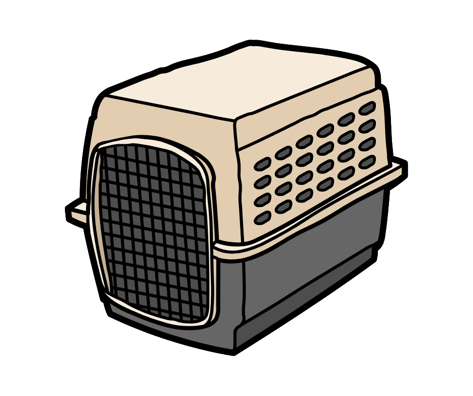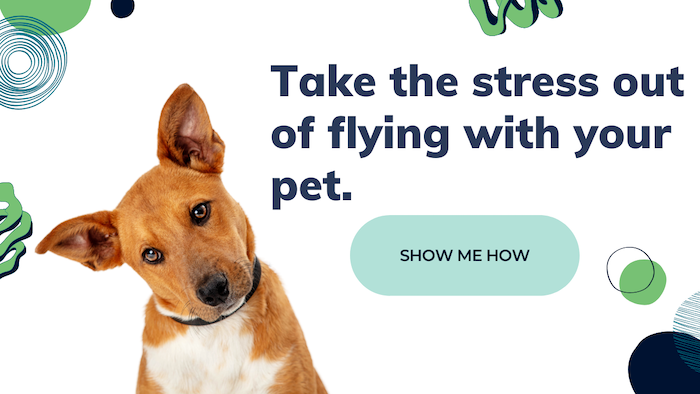Ultimate Guide to Pet Travel Carriers
Published on: November 22, 2019 | Author: Starwood Pet Travel
Introduction
When it comes to traveling with your furry companions, it's essential to have the right pet travel carrier. Dogs and cats who take to the skies must be securely confined in a crate that meets strict requirements. This ensures their safety and comfort throughout the journey. While you might already have a carrier for trips to the vet or for everyday use, chances are it doesn't meet the standards set by the International Air Transport Association (IATA). That's why our Starwood team has created the Ultimate Guide to help you choose the perfect carrier that adheres to IATA regulations and prioritizes your fur baby's well-being. So, let's dive in and discover the key factors to consider when selecting the ideal kennel for your beloved pet.
In this guide, you will learn:
- Pet Travel Crate Requirements
- How to Measure Your Pet
- Rules about Accessories
- Where to Get Your Pet Travel Carrier
- Tips and Recommendations to Help Your Pet Adjust to Their Carrier
- Your Role as Pack Leader
Pet Travel Crate Requirements
When it comes to air travel, there's a general rule of one pet per carrier. However, there are exceptions if you're transporting young puppies or kittens. In those cases, it's best to check with your airline to understand their specific rules. This ensures their safety and comfort during the journey.
Where do pets ride on the plane?
If your furry companion is small and you're embarking on a domestic journey within the US, you may be fortunate enough to have them sit with you in the passenger cabin, snugly tucked under the seat in front of you. However, when it comes to international travel, most airlines (and certain foreign countries) have different rules in place. Regardless of your pet's size, whether it be a petite pup or a tiny kitten, they will need to travel in the cargo hold or as checked baggage. Note that airlines have additional restrictions for brachycephalic pets, because air travel is more stressful for flat-faced or snub nosed dogs and cats.
No matter where your pet rides, they must be confined in an IATA-compliant carrier. They must be able to stand, sit, turn around and lie down normally, without touching the sides or top of the carrier. The carrier must provide plenty of ventilation and have no openings big enough for your pet's nose, toes, or tail to protrude. And it must be escape-proof. So, how do you pick the right one?
In-cabin travel
When it comes to traveling with your pet, you have options when it comes to choosing a carrier. Airlines typically allow both hard- and soft-sided carriers in the cabin, as long as they meet the necessary standards for space and ventilation set by IATA. However, it's important to note that the carrier must also fit under the seat in front of you. Keep in mind that the specific requirements may vary depending on the airline and aircraft model, so it's essential to know the specifications for your intended airplane to ensure a proper fit.
Opting for a soft-sided carrier can offer several advantages. The flexible material allows the carrier to be easily adjusted and "scrunched" to fit under the seat. Additionally, soft-sided carriers often come equipped with shoulder straps, making it easier and more comfortable to carry around the airport while keeping your hands free for other belongings. Some carriers even offer extra features like zippered pockets, which can be convenient for holding your pet's leash, snacks, and other small items. It's also a good idea to keep your pet's travel documents with your own passport for easy access.
If your pet happens to be a snub-nosed breed, it's crucial to choose a carrier that provides ample ventilation. These breeds tend to have difficulty breathing due to their facial structure, so ensuring proper airflow is essential for their comfort and safety during travel.
Travel as checked baggage or cargo
The area where pets are placed in the plane's hold is carefully regulated to ensure their safety and comfort. This area is pressurized and temperature-controlled, just like the passenger cabin. However, pets also spend time in a waiting area and are transported between the terminal and the plane. To meet safety standards, travel crates must be sturdy and non-collapsible, constructed from materials such as fiberglass, metal, solid wood, plywood, or rigid plastic. While you can build your own crate following the exact specifications from IATA, it is also easy to find excellent commercial kennels made of rigid plastic that come ready to assemble. The carrier must:
- Provide ventilation on all four sides
- Have a front door with locking mechanism that your pet cannot unlatch
- Use metal nuts and bolts to secure the top and bottom sections (clips or snaps are not acceptable because they can come undone)
- Have a solid floor that is leak-proof and covered with a layer of absorbent material (provided by you, such as a pad or small blanket)
It's essential that your pet's travel kennel is the appropriate size or they may not be allowed to travel. Now let's get out the tape measure and properly measure your pet!
How To Measure Your Pet
A proper fit is essential for your pet's comfort during travel. It's not a luxury, but a critical aspect to consider when choosing a travel carrier. Even if you have all the necessary documentation, your pet won't be allowed to fly if they arrive at the airport with an unapproved or incorrectly sized crate. This rule is in place across the industry to ensure the safety of pets during travel.
In addition to the size of the crate, you also need to consider the different sizes and shapes of airplanes. If you have a large dog, the crate may not fit on certain aircraft. It's important to know the exact size of your pet's kennel to plan and confirm their travel itinerary effectively. Like clothing, pet travel crates come in standardized sizes.
If you have a dog or very large cat, you’ll need to measure them. Crates must be roomy enough to allow pets to stand, sit, turn, and lie down in a natural position. The kennel must be tall enough to allow sitting or standing with at least 2-3 inches (5-8 cm) of clearance to the ceiling. If your dog has erect ears, we’re talking about the ear tips, not just the top of their head.
Here’s how to measure your pet:
- Length – tip of nose to base of tail (not including the tail itself)
- Height – from the ground to the tallest point (top of head or tip of ears)

If you have a flat-faced pet, you will need a travel crate that is one or even two sizes larger than typical for their size, to ensure maximum ventilation. Many airlines require snub-nosed dogs and cats to have a size-larger carrier.
If you are using Starwood to handle your pet's air travel, we will need to know your pet’s measurements and travel carrier size. We also require photos of your pet and their travel carrier so that we can verify you have the proper size.
Travel Kennel Accessories
Some essential accessories are necessary for your pet's travel carrier:
- 2 plastic or metal cups should be securely attached to the carrier for water and food. If you purchase a commercial crate, make sure these cups are included. You can also attach a small drip-type water bottle above the cups for added convenience.
- Pack a sealed clear sandwich bag containing dry food for trips that are long enough for your pet to need a meal.
- Don't forget to include an absorbent pad or blanket for the floor of the carrier. Opt for a soft and absorbent material for comfort and in case of any accidents. It's recommended to keep the thickness of the pad or blanket to a maximum of 2 inches to avoid affecting the interior height requirement. Avoid using newspaper as your pet could ingest it, and you wouldn't want ink all over their fur. (Yes, that has happened before.)
Forbidden Items
Avoid bringing any additional items such as stuffed animals, toys, clothing, bones, loose bowls, carry cases, litter boxes, or overly large beds. These items are not allowed by airlines as they can overcrowd the carrier and potentially be hazardous to your pet during travel. Instead, pack your pet's favorite toy in your carry-on luggage so that it is readily available when you are reunited.
Where To Get Your Pet Travel Carrier
You can find carriers suitable for both in-cabin and cargo travel at pet supply stores and online. Look for products that not only meet air travel standards but are top-rated by pet owners. The easiest way to get a top-quality carrier guaranteed to meet size and other specs is to purchase one through your pet relocation company (like Starwood).
Tips & Recommendations
Give your pet time to accept their crate
It is highly recommended that you purchase your pet's travel carrier well in advance of your travel date. Allowing your pet ample time to become familiar with their carrier is the most important step you can take to reduce their anxiety on the day of travel.
This is particularly helpful for cats, as they are known to be resistant to change. A new carrier may initially be met with suspicion, but over time, your pet will come to see it as their safe and familiar space. While everything else about the flight experience may be strange, your pet will feel secure in their own familiar environment.
Crate-training is generally easier for dogs, thanks to their natural instinct to seek out enclosed spaces, akin to a cave. Once your pet has had the opportunity to explore their new crate, they will come to accept it as their own personal sanctuary, perfect for embarking on a travel adventure.
It's important to note that the process of familiarization takes time, and the length can vary for different pets. It is recommended to allow a minimum of 3 weeks, but the longer the better. This will give your pet ample time to adjust and feel comfortable in their carrier before the day of travel arrives.
Follow these proven steps:
- Week 1:
Feed them inside the crate – just put their bowl inside and leave the door wide open. At other times, place a yummy treat or toy inside so they have to go in to retrieve it. If your pet is afraid of confined spaces, start with the crate unassembled, just using the bottom section so it looks and feels like a bed, not a trap. Encourage them to play or snooze in it as well as eat.
- Week 2:
Continue the feeding and random treat routine, but close the door gently after they enter. Open it again as soon as they have finished, but don’t leave them inside for more than 15 minutes. If you started with just the bottom half, assemble the crate and follow the plan for week #1 for a couple of days before “graduating” to the closed door.
- Week 3:
Follow the same routine, but have your pet enter the crate and remain there 15 minutes before you feed them or give them a treat/toy.
If you have a pet whose only travel experience is trips to the vet, they're going to associate any container with a negative outcome. You can help alleviate that anxiety with positive trips in the kennel. Load them up (along with a favorite toy) and give them a walk around the yard, or around the block. Take them on short (but increasingly longer) rides in the car. Always give them a high-value reward immediately afterward. See? That wasn’t bad at all!
Make it fun!
While these three training steps will build your pet's confidence and cooperation in entering and remaining in the travel crate, making the process fun can speed the process and increase their comfort with the carrier.
- Every time they enter willingly, reward them with a treat or a toy to play with.
- Every time they successfully complete a “stay” inside the carrier, reward them with a game of fetch, a short run, or some time with their favorite catnip mouse.
- Store their toys in it, or on top of it.
- Play games with them in and around the carrier at random times so it becomes just another normal part of your daily routine.
Add a familiar touch
To provide comfort for your pet during travel, it's important to include something soft and absorbent in the carrier that reminds them of home. This could be their favorite small pad or blanket, or even a T-shirt or sweatshirt that carries your scent (preferably from the laundry bin, not freshly cleaned). By incorporating familiar scents and textures, you can help alleviate any stress or anxiety your pet may experience while in the carrier.
No sedation!
While it may be tempting to ask your veterinarian for medication to calm your pet's nerves during travel, it's important to understand that this is not allowed for safety reasons. Pet transport companies and airlines have strict policies against accepting animals that have been sedated. Tranquilizers and sedatives can have adverse effects on pets, leaving them disoriented, unsteady on their feet, and unable to control their movements. This can actually increase their anxiety and the risk of injury. Instead, consider discussing natural calming products with your vet, such as Bach Rescue Remedy, Zylkene, or Feliway (for cats only). These alternatives can provide a sense of ease for your pet without compromising their well-being.
Get a fresh groom
If your pet tends to scratch or claw at the carrier once inside, it's a good idea to trim their nails right before the journey. This will prevent them from hurting themselves during travel. Don't worry, the carrier is designed to withstand their natural instincts. Additionally, if your pet has a thick or long-haired coat and is traveling from a cold climate to a hot destination, consider trimming their fur before the flight. This will help them adjust more easily to their new environment upon arrival.
Your Role as a Pack Leader
Your pet relies on you for guidance and reassurance in all situations, as you are the pack leader (or your cat's favorite human). Your objective is to demonstrate a sense of calm: this is just another thrilling adventure – albeit a significant one – with FurMom or FurDad.
We understand that projecting calm and a sense of "everything's alright" is challenging when you're overwhelmed with the million tasks and small details involved in organizing an international move. However, losing your composure won't help, and it will only add to your pet's worries and anxieties. Their biggest fear? That they'll be left behind.
Now is the time to emphasize the best stress reliever for both pet parents and fur babies – togetherness. Playtime and cuddling alleviate anxiety and strengthen your special bond. Yes, things may feel strange and chaotic right now, but that's okay because you're in this together. So, carve out as much one-on-one time as possible with your pet. And make sure that some of that time includes play inside or around the travel carrier.
Conclusion
We have compiled this comprehensive guide to provide you with all the necessary information about pet travel carriers. However, we understand that you may still have some unanswered questions. After all, every pet and family's relocation experience is unique. But rest assured, you have the capability to handle this.
And soon enough, the day will come when you open the door of the pet travel crate for the last time. Both you and your beloved pet will finally be home, regardless of where that may be.
Starwood Animal Transport has rebranded to Starwood Pet Travel. We are still the same great company with the best team, just now with a slightly different name.
Subscribe to the Blog
Enjoy our content? Get them sent to your inbox!
Subscribe Now!



